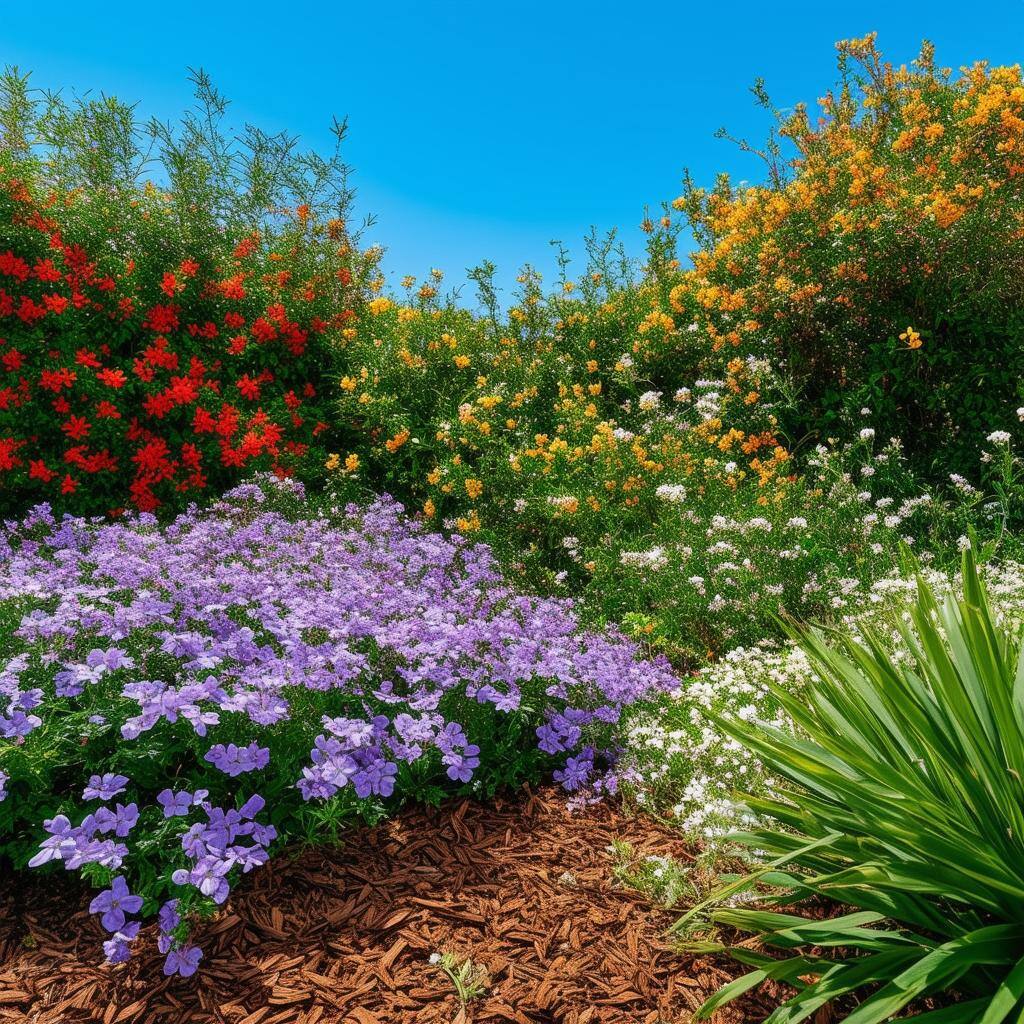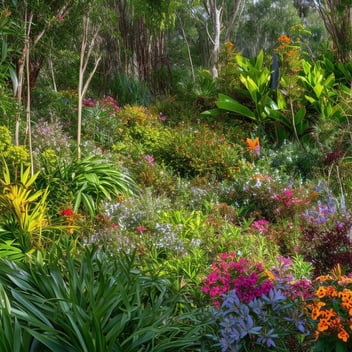Flowering Groundcovers for Year-Round Colour in Queensland
Introduction
In the sun-drenched landscapes of Queensland, cultivating a garden that exudes vibrant hues throughout the year is both an art and a science. Flowering groundcovers are indispensable in this pursuit, offering continuous splashes of colour while fulfilling essential ecological roles.
Advantages of Flowering Groundcovers
Soil Stabilization
The intricate root systems of groundcovers act as natural anchors, preventing soil erosion, particularly on slopes and embankments.
Weed Suppression
By forming dense mats, these plants effectively inhibit weed growth, reducing the need for chemical herbicides and manual weeding.
Biodiversity Enhancement
The blossoms of flowering groundcovers attract a plethora of pollinators, including bees and butterflies, thereby fostering biodiversity within the garden ecosystem.
Selecting Appropriate Groundcovers for Queensland
Climate Adaptability
Queensland's subtropical climate necessitates the selection of groundcovers that can endure high temperatures, humidity, and seasonal rainfall variations.
Soil Compatibility
Understanding the soil composition—be it sandy, loamy, or clayey—is crucial in choosing groundcovers that will thrive in specific garden conditions.
Light Requirements
Assessing areas for full sun, partial shade, or deep shade ensures that selected groundcovers receive optimal light for prolific flowering.
Top Flowering Groundcovers for Continuous Colour
Scaevola albida (Mauve Carpet)
Blooming Characteristics
This resilient groundcover is adorned with fan-shaped mauve flowers that bloom profusely from spring through autumn, providing extended periods of colour.
Growth Habit
Mauve Carpet forms a low, spreading mat, making it ideal for covering large areas and effectively suppressing weeds.
Grevillea 'Bronze Rambler'
Flowering Period
Exhibiting vibrant red flowers predominantly in spring and summer, this cultivar also offers sporadic blooms throughout the year, ensuring continuous visual interest.
Maintenance Considerations
Drought-tolerant once established, it requires minimal maintenance, making it suitable for low-care landscapes.
Hibbertia scandens (Climbing Guinea Flower)
Aesthetic Appeal
Bright yellow, buttercup-like flowers grace this plant, creating a striking contrast against its glossy green foliage.
Versatility in Landscaping
Functioning both as a groundcover and a climber, it can be utilized to drape over embankments or ascend trellises, adding vertical interest.
Viola hederacea (Australian Violet)
Flowering Traits
Delicate white and purple flowers adorn this plant year-round, offering a continuous display of subtle beauty.
Optimal Growing Conditions
Thriving in moist, shaded environments, it is perfect for underplanting in woodland settings or alongside water features.
Myoporum parvifolium (Creeping Boobialla)
Floral Features
Small, star-shaped white flowers emerge primarily in spring and summer, adding a delicate charm to garden spaces.
Environmental Tolerances
Adaptable to a range of soil types and tolerant of coastal conditions, it is an excellent choice for diverse Queensland landscapes.
Planting and Establishment
Site Preparation
Begin by clearing the area of weeds and debris. Incorporate organic matter to enhance soil fertility and drainage.
Planting Techniques
Space plants according to their mature spread to ensure complete coverage. Water thoroughly after planting to establish strong root systems.
Initial Care Guidelines
Apply mulch around the base of plants to conserve moisture and suppress weeds. Provide consistent watering during the establishment phase to promote healthy growth.
Maintenance Practices
Pruning and Deadheading
Regularly remove spent flowers to encourage continuous blooming. Prune as necessary to maintain desired shape and prevent overgrowth.
Irrigation Strategies
While many groundcovers are drought-tolerant once established, periodic deep watering during extended dry periods supports sustained vigour.
Pest and Disease Management
Monitor for common pests and diseases, employing integrated pest management practices to address issues promptly and minimize chemical use.
Designing with Flowering Groundcovers
Integrating with Other Flora
Harmonize groundcovers with existing flora by considering complementary colours, textures, and growth habits.
Creating Seasonal Interest
Select groundcovers with staggered blooming periods to ensure a continuous display of colour across seasons.
Functional Landscape Applications
Utilize groundcovers to stabilize slopes, fill gaps between larger plants, or serve as living mulch to conserve soil moisture and enhance garden aesthetics.




